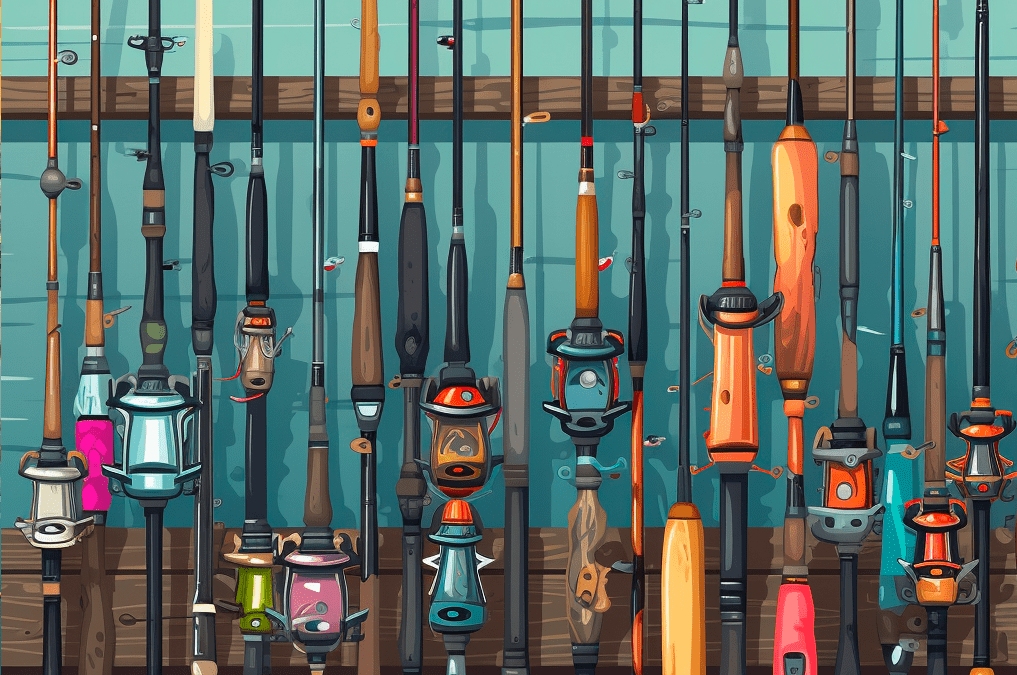
When it comes to bass fishing, having the right equipment is crucial for success. One of the most important pieces of equipment is the fishing rod. There are several different types of rods to consider when bass fishing, each with their own unique benefits and intended uses.
The first type of rod to consider is the spinning rod. Spinning rods are ideal for light and finesse techniques, such as drop shotting, shaky head fishing, and wacky rigging. They are also great for targeting smaller species of bass and finesse fishing in clear water. Spinning rods come in a range of lengths and actions to suit different types of fishing.
The next type of rod to consider is the baitcasting rod. Baitcasting rods are designed for heavier lures and techniques, such as flipping, pitching, and punching through heavy cover. They are also great for fishing in dense brush and around structure. Baitcasting rods are typically shorter and stiffer than spinning rods, with a fast or extra-fast action. They also feature a trigger grip to help prevent the rod from slipping out of your hand during a cast.
Another type of rod to consider is the crankbait rod. Crankbait rods are designed specifically for fishing with crankbaits. They are typically longer and more flexible than other types of rods, which allows for a better casting distance and more accurate placement of the lure. Crankbait rods also have a moderate action, which helps to absorb the shock of the lure bouncing off rocks and other underwater obstacles.
Finally, there are flipping and pitching rods. These rods are designed for fishing in heavy cover, such as grass mats and lily pads. They are typically shorter and heavier than other types of rods, with a fast or extra-fast action. Flipping and pitching rods also feature a longer handle, which allows for better leverage when setting the hook.
In conclusion, having the right rods for bass fishing is essential for success on the water. Whether you’re finesse fishing with light lures or punching through heavy cover, there is a rod out there that is designed to meet your needs. By choosing the right rod for the job, you can increase your chances of landing that trophy bass.
Choosing A Rod
In addition to the types of rods I mentioned earlier, there are a few other factors to consider when choosing the right rod for your bass fishing needs.
One of these factors is rod length. Generally speaking, longer rods provide better casting distance and accuracy, while shorter rods provide better leverage and control when fighting a fish. However, longer rods can also be more difficult to handle in tight spaces, such as when fishing from a kayak or canoe.
Another factor to consider is rod power or weight. This refers to how much force is required to bend the rod, and is usually rated on a scale from ultralight to heavy. Lighter rods are better suited for finesse techniques and smaller fish, while heavier rods are better for larger fish and heavier lures.
Rod action is another important factor to consider. This refers to how much of the rod bends when pressure is applied to the tip. A fast or extra-fast action rod bends primarily in the top one-third of the rod, which provides excellent sensitivity for detecting bites and setting the hook quickly. A moderate or slow action rod bends throughout the entire rod, which provides more forgiveness when fighting a fish.
Finally, it’s important to consider the materials used to make the rod. Graphite rods are lightweight and sensitive, but can be brittle and prone to breaking if mishandled. Fiberglass rods are more durable, but are heavier and less sensitive than graphite. Some rods are made from a combination of graphite and fiberglass, which provides a good balance of sensitivity and durability.
In summary, choosing the right rod for bass fishing involves considering factors such as length, power, action, and materials. By selecting a rod that is designed for the specific type of fishing you plan to do, you can increase your chances of success and have a more enjoyable time on the water.

